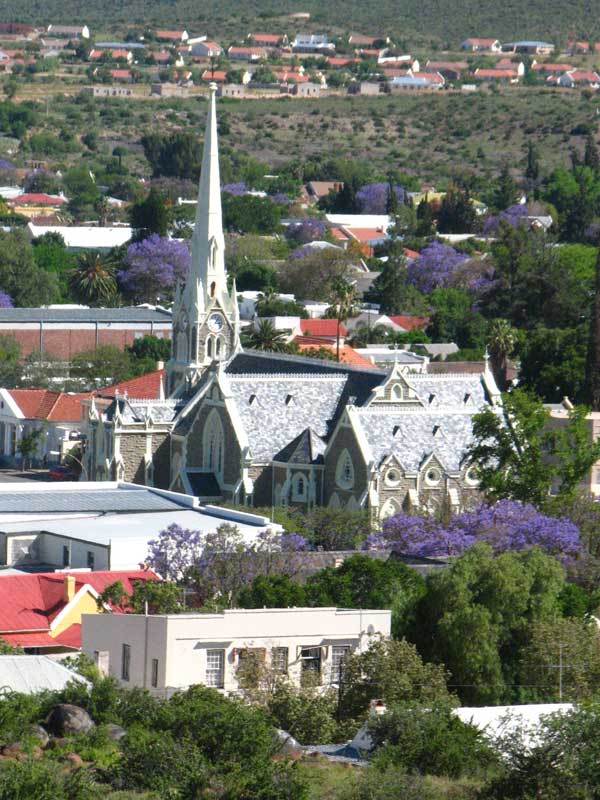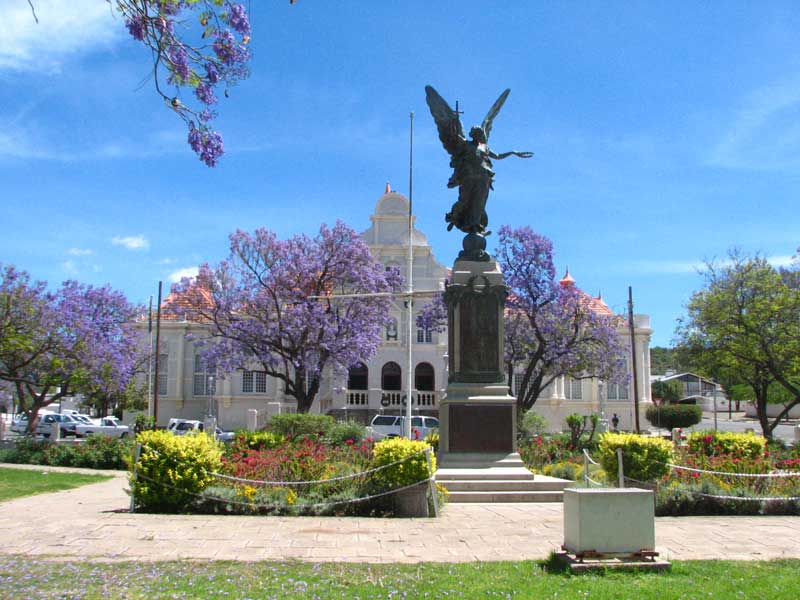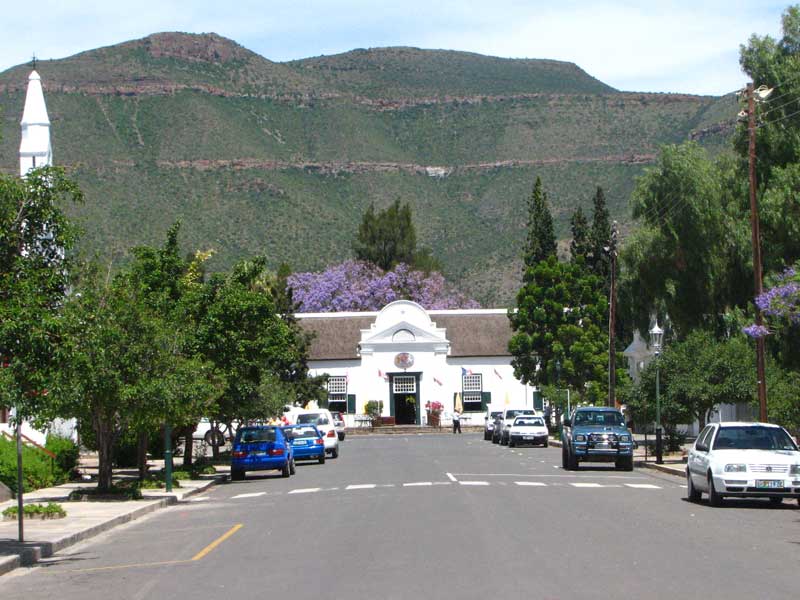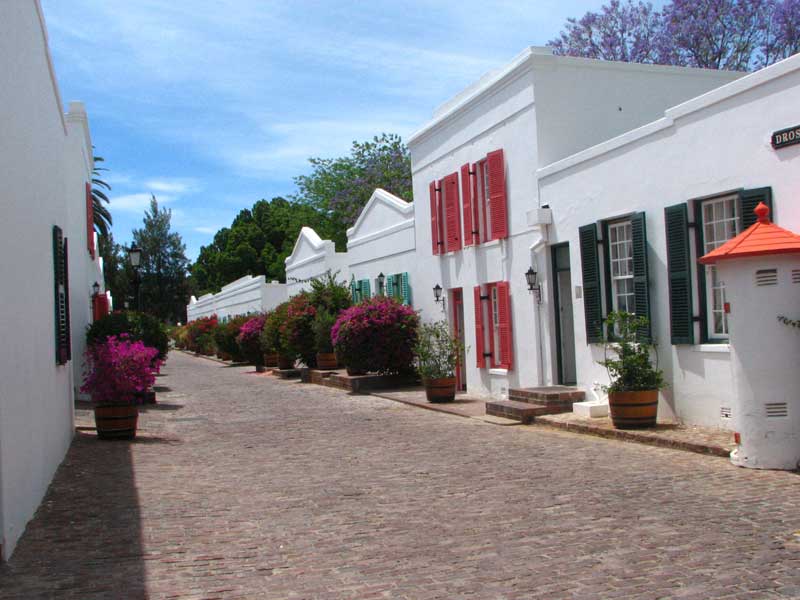Project Description
Graaff-Reinet is the fourth oldest town in South Africa, having been established in 1786. The town sits in a bend in the Sundays River in the shadow of the Sneeuberg Mountain. Graaff-Reinet falls within the Camdeboo National Park. Much of Graaff-Reinet still has the feel of a 19th century town with some streets restored and as many as 200 buildings declared as national monuments. Some of these buildings are now the museums exhibiting the history of the town through the centuries. Some of these buildings are now the museums exhibiting the history of the town through the centuries.
Reinet House
Reinet House is a Cape Dutch building completed in 1812. It was initially built as a parsonage, but now serves as a museum. Other than the collections on display, visitors can marvel at one of the largest living grape vines in the garden that was planted in 1870 and continues to bear fruit.
The Laubscher Doll Collection is one of the main attractions of the museum. Anna Laubscher began making dolls in 1915 when there were none to be found in Graaff-Reinet over Christmas. Anna designed the doll’s body and painted the face and her mother designed the head. Anna’s studio became the doll factory in which girls, boys, and old men were employed.
Another attraction, The Porcupine Quill House, was built by a retiree as a hobby. He designed the house, collected porcupine quills from farmers in the area and built the model, using over 40 000 pins to secure the quills. The house has 52 windows complete with curtains, and figurines to make it more realistic. The model was exhibited the work at Mr Joubert’s home in Bourke Street and it drew visitors from far afield.
The Rykie Pretorius Collection, a collection of the turn-of-the-20th century clothing, is exhibited at Reinet House at times.
Pierneef Exhibition Museum
Jacobus Pierneef (1886-1957) was considered to be one of South Africa’s master landscape artists. He was inspired by the South African highveld and simplified these landscapes in his art by using flat planes, lines, geometric structures and colour.
In 1929, Pierfneef was commissioned to paint 32 panels for the new Johannesburg Railway Station. He completed the panels in 1932. The panels are thought to be some of this best work and can be viewed at the museum in Middel Street.
Urquhart House
Urquhart House serves as an archival repository that houses the genealogical records for the area. It is also a Victorian period museum with good collection of Victorian furniture.
Military History Museum
Miltary House Museum displays an overview of the military history of Graaff-Reinet from the 1800’s until June 2007. Exhibits include those of the Anglo Boer War, the Graaff-Reinet Commando from the First World War, Die Middellandse regiment from the Second World War and The Regiment Groot Karoo.
Old Library Museum
The Old Library Museum has several interesting collections:
- Stone-age artefacts and rock art
- Karoo Fossils
- Mangaliso Robert Sobukwe Exhibition
- William Roe Photographic Collection
- Slavery Exhibition
Old Residency
The Old Residency is a 19th century house that displays a collection of sporting rifles and exhibits from the Midland Regiment.
Hester Rupert Art Museum
The Hester Rupert Art Museum, a converted Dutch Reformed Mission Church, now displays a collections of contemporary South African art.
Dutch Reformed Church
Constructed between 1885 and 1887, this church is a good example of Gothic architecture in South Africa. The church was modeled on the design of the Salisbury Cathedral in England.
The Drostdy and Stretch’s Court
The Drostdy was the seat of local government for 40 years from 1806. After many changes, the building was restored in 1977 and is currently a hotel.
Stretch’s Court is a pretty alley of renovated mid-nineteenth century cottages behind the Drostdy Hotel. The cottages were once lived in by freed slaves.
Obesa Cacti & Succulent Collection
The Obesa Collection has the largest collection of cacti and succulents in Africa. The collection has over 4000 different species, of which 99% is indigenous. Visitors can go on a guided tour and buy seeds and plants.
Common misspellings of Graaff-Reinet
Similar to Nieu Bethesda, the name Graaff-Reinet lends itself to being misspelt. Some of the misspellings include: Graaffreinet, Graf, Graaff, Graff, Reinet, Reinett, Renet and Renett.





